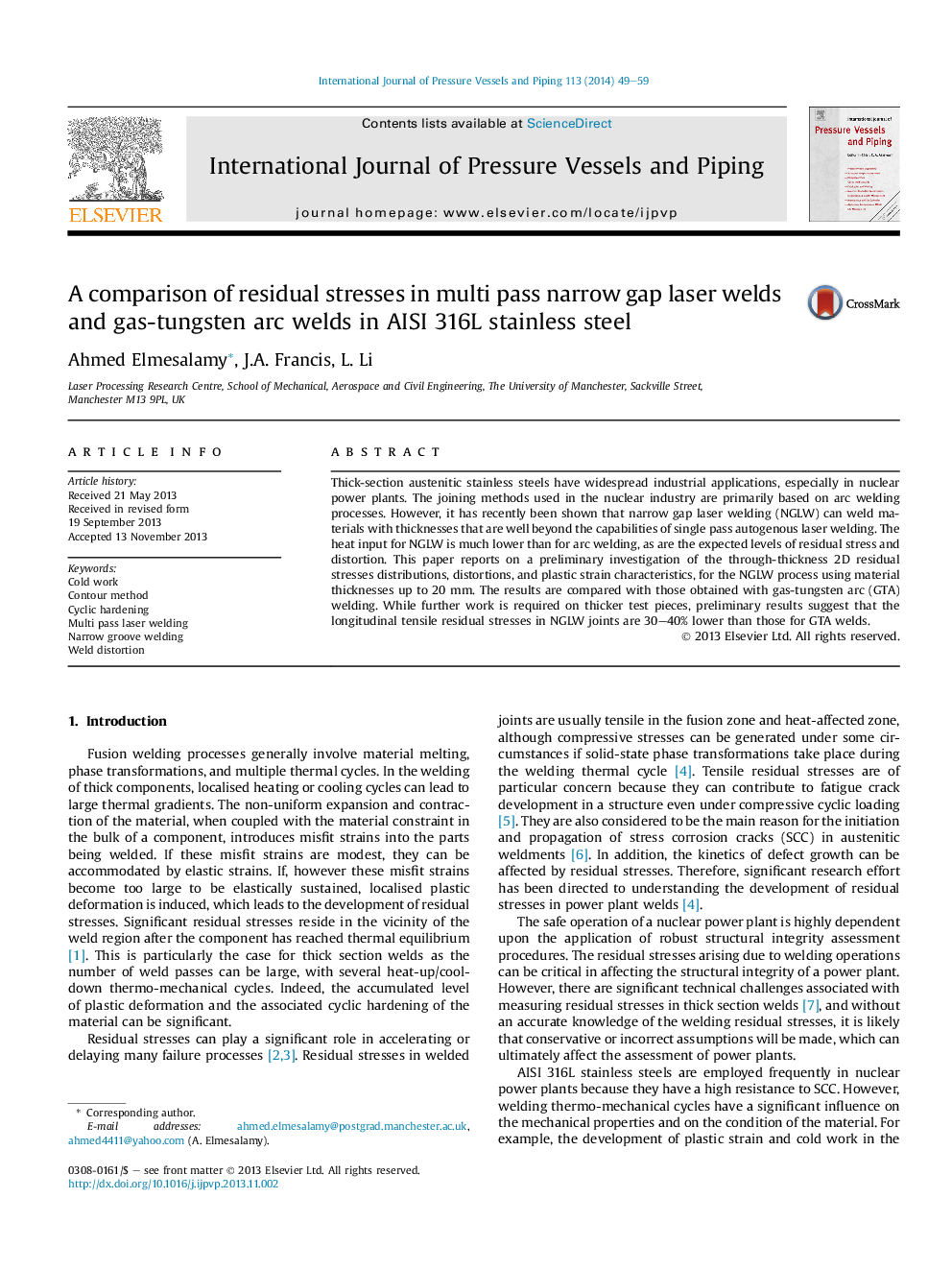| کد مقاله | کد نشریه | سال انتشار | مقاله انگلیسی | نسخه تمام متن |
|---|---|---|---|---|
| 790694 | 1466080 | 2014 | 11 صفحه PDF | دانلود رایگان |

• The magnitude of the residual stresses is 30–40% lower in the Narrow Gap Laser Welds NGLW in comparison to those for GTA welding.
• NGLW technique resulted in a very narrow tensile stress region.
• The welding strategy has a significant influence on the induced residual stress for the NGLW technique.
• The distortion angle of GTA welds is approximately 3 times higher than for NGLW.
• The accumulation of plastic strain due to thermo-mechanical cycling in GTA welding is higher than for NGLW.
Thick-section austenitic stainless steels have widespread industrial applications, especially in nuclear power plants. The joining methods used in the nuclear industry are primarily based on arc welding processes. However, it has recently been shown that narrow gap laser welding (NGLW) can weld materials with thicknesses that are well beyond the capabilities of single pass autogenous laser welding. The heat input for NGLW is much lower than for arc welding, as are the expected levels of residual stress and distortion. This paper reports on a preliminary investigation of the through-thickness 2D residual stresses distributions, distortions, and plastic strain characteristics, for the NGLW process using material thicknesses up to 20 mm. The results are compared with those obtained with gas-tungsten arc (GTA) welding. While further work is required on thicker test pieces, preliminary results suggest that the longitudinal tensile residual stresses in NGLW joints are 30–40% lower than those for GTA welds.
Journal: International Journal of Pressure Vessels and Piping - Volume 113, January 2014, Pages 49–59